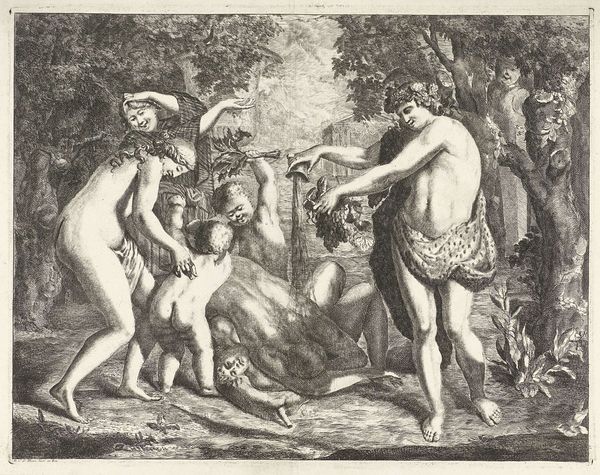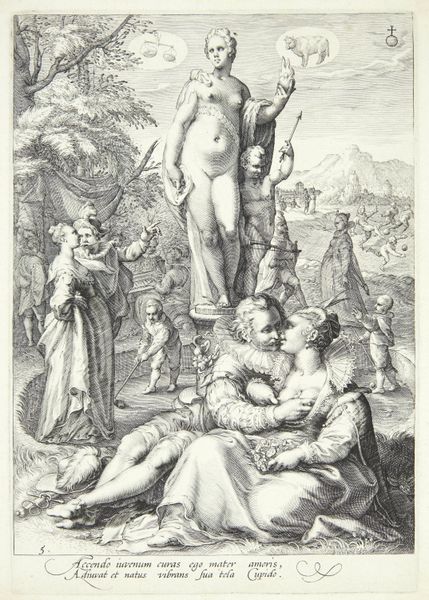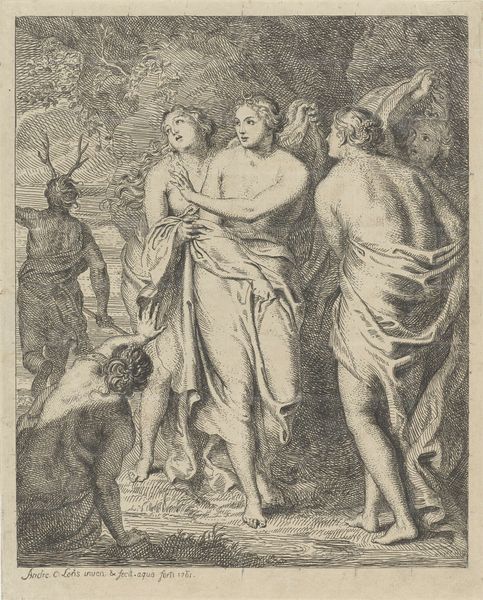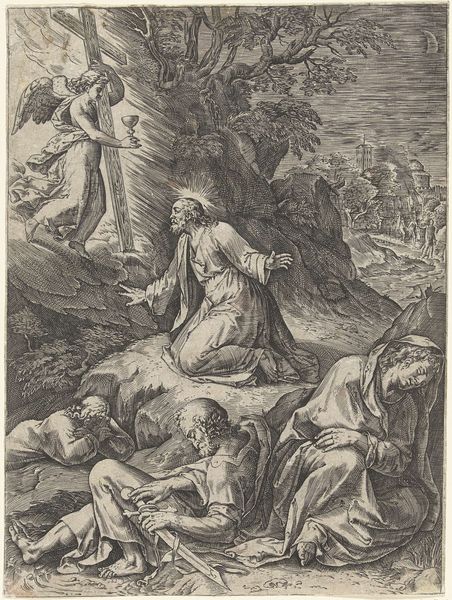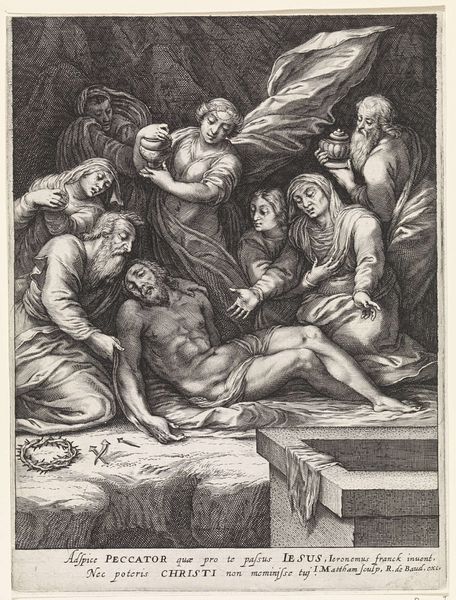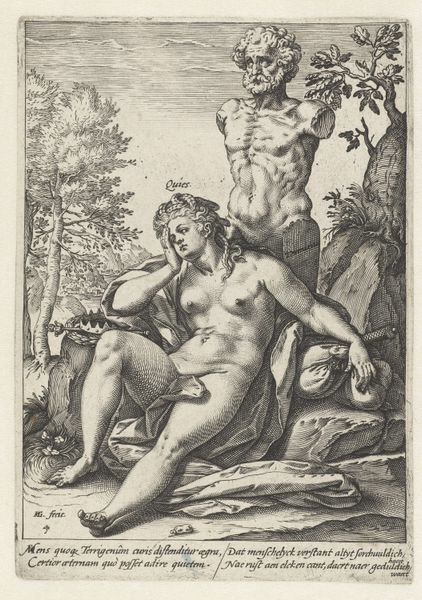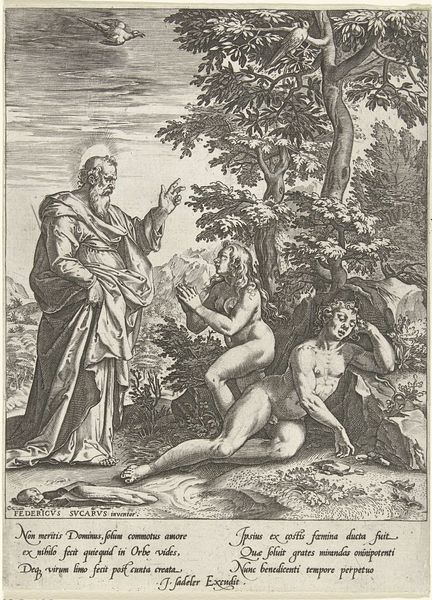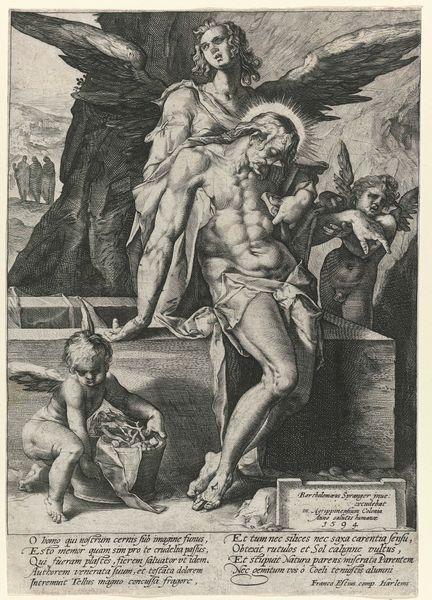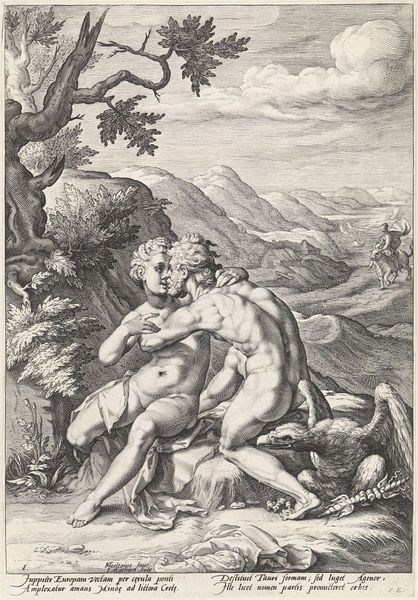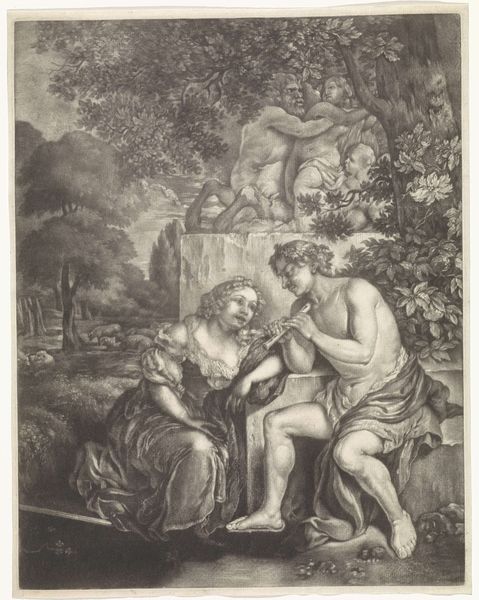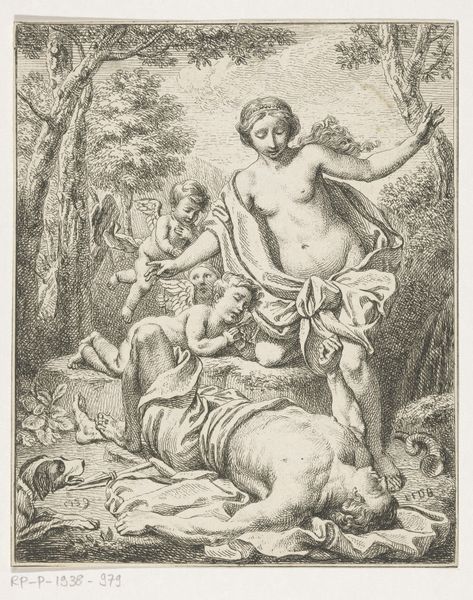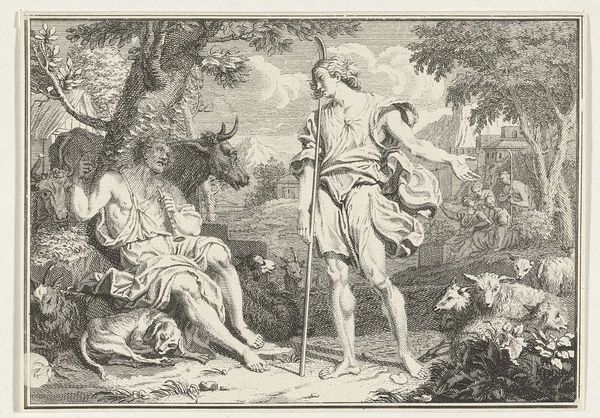
print, engraving
# print
#
old engraving style
#
figuration
#
genre-painting
#
history-painting
#
northern-renaissance
#
nude
#
engraving
Dimensions: height 255 mm, width 194 mm
Copyright: Rijks Museum: Open Domain
Editor: This is "Diana's Nymphs Discovering the Pregnancy of Callisto," an engraving by Jacob Matham from around 1590. It has such a formal, posed feeling about it, almost like a stage play frozen in a single moment. What do you see in this piece, beyond the surface narrative? Curator: Well, first, consider the visual vocabulary at play. Notice how Matham utilizes the classical theme to explore societal anxieties. Pregnancy outside of marriage, especially for a follower of Diana, the goddess of chastity, would have carried significant cultural weight. The revealed pregnancy serves as a symbol, really a disruption, of the idealized order represented by Diana and her nymphs. Editor: So it's not just a story, it's a representation of social tension? Curator: Exactly. The figure of Callisto is pivotal. Is she ashamed? Is she defiant? It is unclear, because there are diverse opinions about Callisto on the engraving, reflecting the spectrum of responses one might expect within that social context. And look how the figures pointing to Callisto are themselves framed: are they indicators of judgment, fear, condemnation or are they a visual instruction meant for a diverse public, each figure on that end is very unique, just like a varied audience. Consider also the fleeing figures in the background. What narrative thread do they reveal to us? Editor: They look like they’re escaping the scene. Is that supposed to represent some form of social stigma or something of that nature? Curator: It certainly implies the consequences of Callisto's transgression. What this engraving really signifies is how art and symbol shape communal morality, reminding us that these visual motifs live far beyond the boundaries of "ancient" myths; these very same discussions reverberate in contemporary issues about societal boundaries, individual freedom, and acceptance. Editor: I never considered it like that before; how cultural anxieties and memory work like a stage play over centuries, fascinating! Curator: Indeed. Art enables those silent but profound conversations, sometimes without anyone noticing at first.
Comments
No comments
Be the first to comment and join the conversation on the ultimate creative platform.
